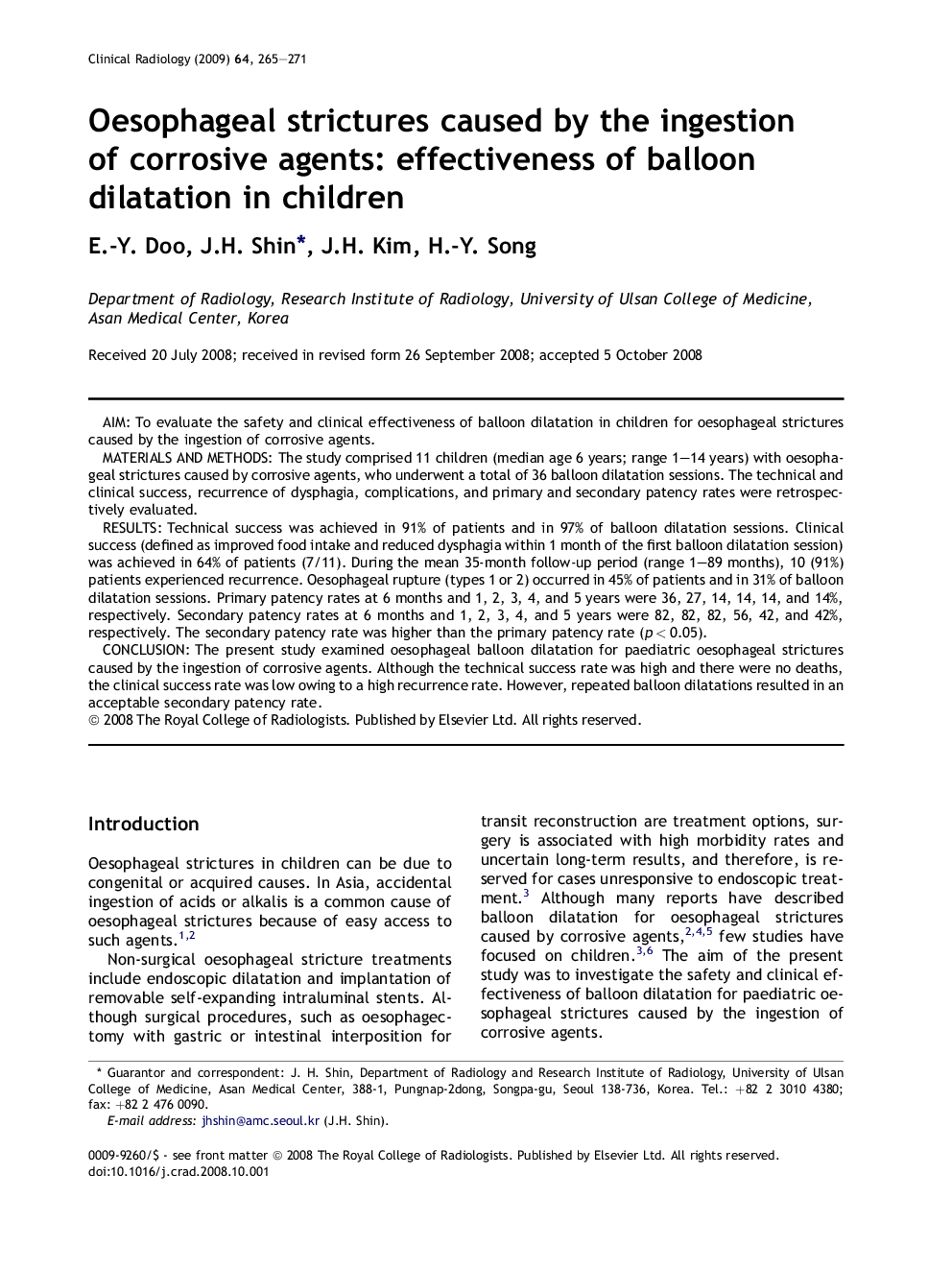| Article ID | Journal | Published Year | Pages | File Type |
|---|---|---|---|---|
| 3983310 | Clinical Radiology | 2009 | 7 Pages |
AimTo evaluate the safety and clinical effectiveness of balloon dilatation in children for oesophageal strictures caused by the ingestion of corrosive agents.Materials and methodsThe study comprised 11 children (median age 6 years; range 1–14 years) with oesophageal strictures caused by corrosive agents, who underwent a total of 36 balloon dilatation sessions. The technical and clinical success, recurrence of dysphagia, complications, and primary and secondary patency rates were retrospectively evaluated.ResultsTechnical success was achieved in 91% of patients and in 97% of balloon dilatation sessions. Clinical success (defined as improved food intake and reduced dysphagia within 1 month of the first balloon dilatation session) was achieved in 64% of patients (7/11). During the mean 35-month follow-up period (range 1–89 months), 10 (91%) patients experienced recurrence. Oesophageal rupture (types 1 or 2) occurred in 45% of patients and in 31% of balloon dilatation sessions. Primary patency rates at 6 months and 1, 2, 3, 4, and 5 years were 36, 27, 14, 14, 14, and 14%, respectively. Secondary patency rates at 6 months and 1, 2, 3, 4, and 5 years were 82, 82, 82, 56, 42, and 42%, respectively. The secondary patency rate was higher than the primary patency rate (p < 0.05).ConclusionThe present study examined oesophageal balloon dilatation for paediatric oesophageal strictures caused by the ingestion of corrosive agents. Although the technical success rate was high and there were no deaths, the clinical success rate was low owing to a high recurrence rate. However, repeated balloon dilatations resulted in an acceptable secondary patency rate.
